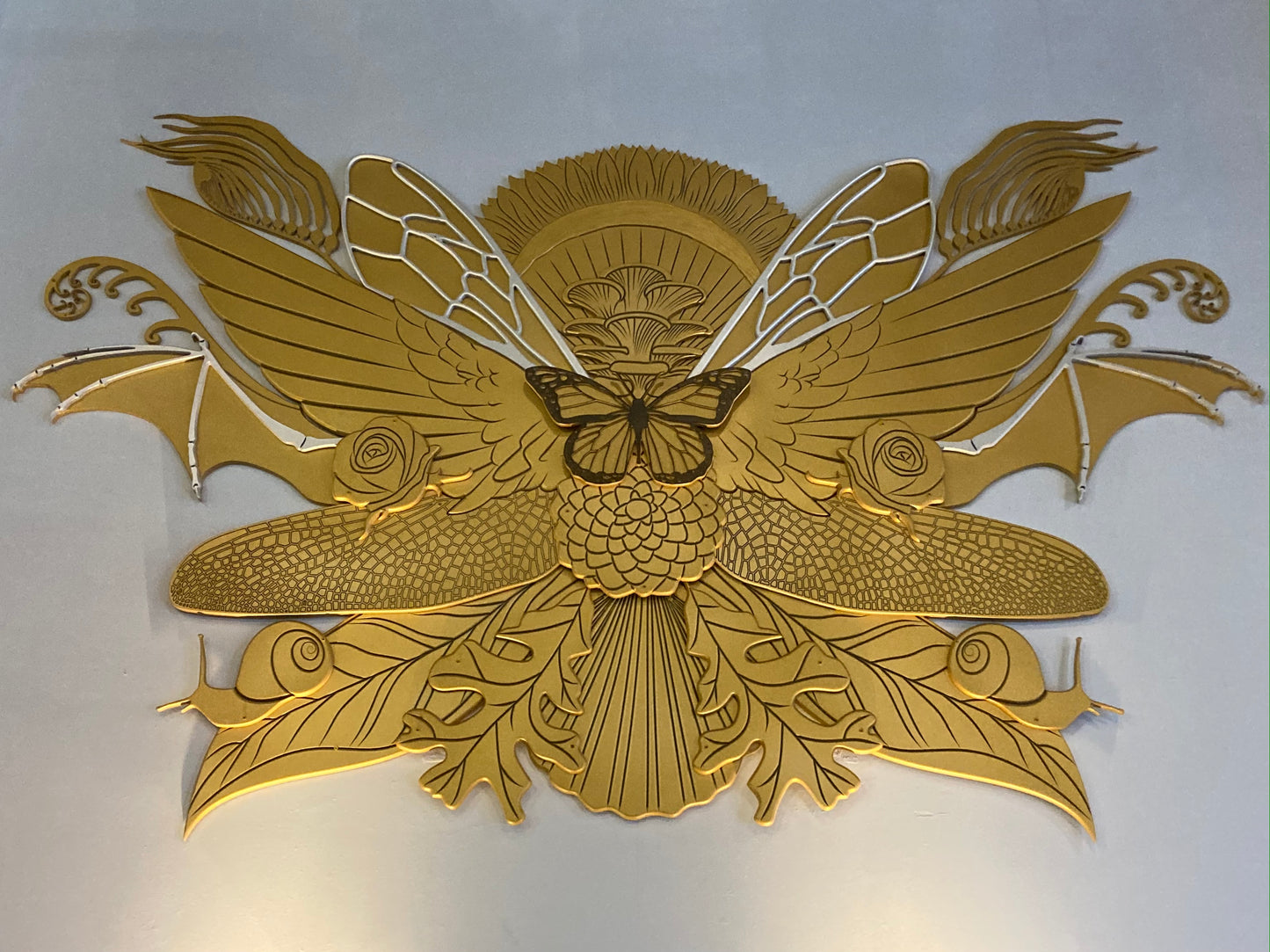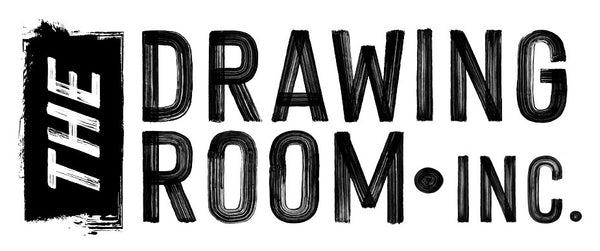Font of Creation
Font of Creation
Font of Creation
CreatingAS1: Sara Corbett & Aaron Haldiman
Eureka medium-density fibreboard (MDF) made from post-harvest rice straw with no added formaldehyde, a sustainable alternative to wood MDF
2022
One meaning of “font” is a productive source, with the root of the word being spring or fountain. Font also is related to typeface and means a set of letters and symbols in a particular design.
We look around and see the Fibonacci spiral, voronoi shapes, and other patterns everywhere, for instance in our own bodies, as well as plants, animals, insects, galaxies, etc. It's as if the planet has certain typefaces it uses over and over.
This artwork celebrates the interconnectedness of all of us as expressions of this universe, by visually depicting this language of life as a bursting blossom of wings, creatures, leaves, and more.
Price: $7,500
We are proud and pleased to share 50% of the proceeds from the sale of the artwork with The Drawing Room Annex. We appreciate their time, energy, and passion to make this gallery possible. We deeply respect their commitment to art and culture, as well as their focus on issues such as climate change, our relationship to the planet, and women's rights.
Artist Statement
CreatingAS1 came to life through Aaron Haldiman and Sara Corbett. Our name has multiple layers of meaning. The two of us are uniting as one to create art. We are creating and developing ourselves as individuals and a partnership in the process. We also see our artwork as an empowering collaborative effort that requires and positively impacts others. We are all interconnected and through art we can inspire and transform the world. Together we are creating as one.
The purpose of CreatingAS1 is to contribute to a loving, regenerative, healing, healthy way of life - on a personal and global level. We produce art that honors and depicts a culture where the activities of humanity shift towards regeneration, resilience, and beyond. Humans are capable of living in ways that support the earth’s interconnected ecosystems such that each person, community, and nature as a whole can thrive.
Art can be engaging, evocative, and help people imagine or experience a beautiful existence, which can then motivate them to take actions consistent with producing that vision. Art can be emotionally influential similarly to how stories touch people in a way that facts alone sometimes do not. We are passionate and we see art as a powerful tool to make a difference.
Eureka medium-density fibreboard (MDF)
The material used to make this artwork is a brand new, amazing alternative MDF that doesn’t use trees, instead uses an agricultural waste product, saves water, only travelled a few hours from farm to gallery, uses a green-building resin, doesn’t have the toxic consequences of formaldehyde, and was created by a company that has women in key leadership positions.
Eureka MDF is created by CalPlant, which is located in the heart of the rice farming community in Willows, California, located in the Sacramento Valley. CalPlant is the world’s first commercial-scale manufacturer of no-added-formaldehyde, rice straw-based MDF.
The rice straw used to manufacture Eureka is annually renewable, available and abundant. Rice straw is usually seen as an agricultural waste product with no known subsequent value, not even as feedstock due to its lack of nutrients.
Rice farmers used to burn their rice straw. In 1991, California mandated the phasing out of field-burning. Farmers then started flooding their fields with water over winter to aid in the straw's decomposition in preparation for spring planting. However, this uses so much water which is a precious resource. By removing the waste straw from the rice fields and converting it into MDF, 18 million gallons of water each year are saved that would have been used.
Furthermore, this is a locally-made material that traveled only a few hours to San Francisco. It is collected each fall within an average 25-mile radius of the plant, substantially reducing the impact of transporting raw material to the manufacturing site.
It’s also better for the health of all people involved. Standard MDF is made with wood fibers combined with wax and a resin binder that is then formed into panels by applying high temperature and pressure. It’s typically made with around 9% urea-formaldehyde resin glue.
By using a formaldehyde-free resin system to produce it, Eureka panels don’t negatively impact indoor air. Instead of urea formaldehyde, the rice straw fiber is held together with polymeric methylene-diphenyl-diisocyanate (pMDI), a green building and State-sanctioned adhesive resin common in the composite panel industry.
The use of rice straw versus wood fiber reduces overall manufacturing plant emissions, with comparably sized, wood-based MDF plants that produce as much as 20 times more VOCs.
Lastly, while CalPlant’s story begins with two men, Jerry Uhland and Jim Boyd, in 2022, Gerina Freeman became the Chief Executive Officer (CEO). CalPlant's vice president of sales, marketing, and sustainability is Elizabeth Whalen. Check out EurekaMDF.com to learn more
Special Thanks
- Veronica Culpepper, for all of your love and support
- HumanMade (maker space in San Francisco) including Ryan, Sandy, Seth, Jeannie, and other amazing members and staff.
- James Ngo at Beronio Lumber, SF, and Ivan at Royal Plywood for arranging the purchase of Eureka MDF


